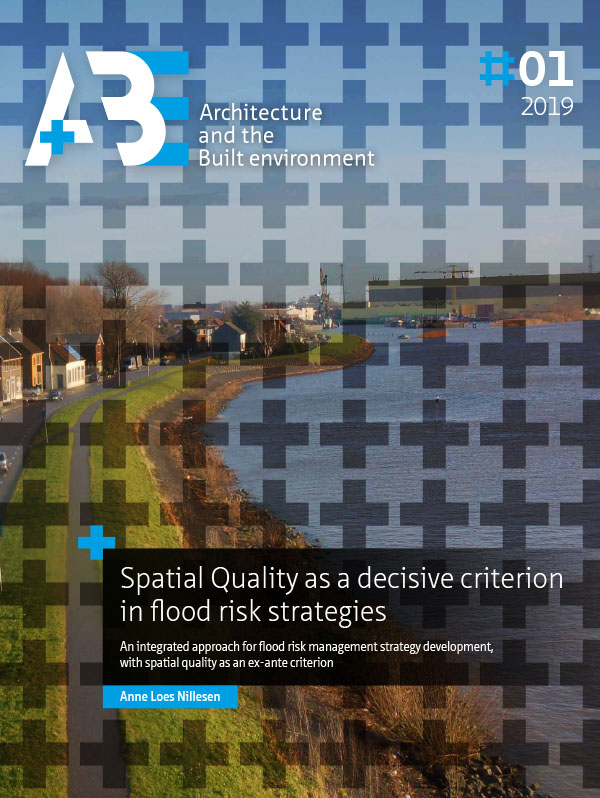Water Safety Strategies and Local-scale Spatial Quality
DOI:
https://doi.org/10.7480/abe.2019.1.3741Abstract
In this paper, the development of a method to assess the impact of a flood risk intervention on spatial quality is described. In order to make spatial quality a decisive criterion for the selection of flood risk management interventions, the assessment of the impact of an intervention on spatial quality should be assessed in a verifiable and reproducible way. As described in the first publication, the Delta Programme defined four alternative system strategies for the reduction of flood risk in the Rijnmond Drechtsteden area. In this research, the developed method is deployed to assess the impact of those alternative system scale interventions on local scale spatial quality.
The developed method is based on the ‘Room for the River’ assessment framework for spatial quality, which is based on a combination of a criteria checklist and expert judgement. The Room for the River method is developed to test elaborate design proposals in a rural setting. In this research, the framework is adjusted and extended to test more conceptual interventions, and criteria are altered to fit the more urban setting of the Rijnmond Drechtsteden area.
In the research, the criteria on the checklist (which are based on the perception of spatial quality of a combination of utility, attractiveness, and robustness) are only considered when deemed relevant by the experts. The checklist supports the expert judgement in two valuable ways: firstly, as a tool to during consecutive assessments provide the experts with a coherent and wide view of criteria, and secondly, to make the assessment verifiable and open to discussion.
The method contains the following steps:
- Adapt the spatial assessment framework to specific conditions for a case study area. Visualise the various (local-scale) locations that need to be evaluated in a consistent and neutral fashion.
- Assess the current situation as a reference, using an expert team and relevant criteria from the framework
- Assess the new situation related to the flood risk protection strategy, using an expert team and relevant criteria from the framework.
Though time-consuming, the assessment framework works well in achieving verifiable assessments regarding the impact of regional and local flood risk management interventions on spatial quality at a local scale, in this particular case study, by allowing the local scale spatial quality to function as a selection criterion for selecting a regional flood risk management strategy. In this dissertation research, spatial quality is aimed to be a criterion in strategy development and not just in selecting already composed strategies. In order to achieve this, in an earlier research stage, different measures will have to be assessed, and, based on the assessment, be selected or omitted as components of a regional flood risk management strategy.

